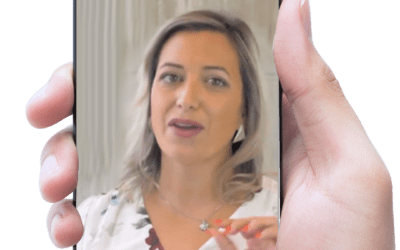When will we see leads?
Many organizations making their foray into a formal marketing program aren’t sure what to expect in the way of leads and ROI. Recently, two separate CEOs we spoke with talked about requiring an 800-point return on marketing in year one. What’s realistic?
Most companies we speak with have a sales function, so their expectations for lead gen are informed by what is already happening in sales. This is good, but paints only a partial picture. If you are trying to estimate the number of leads you’ll see from marketing, try the formula below.
Start with what you know now: sales to deal time
Even if you haven’t been keeping track of your lead-to-deal numbers, you will probably have a good sense of how long it takes to go from the first sales call to closing the deal. During this point in the buying process people have done a lot of research and are posing unanswered questions, and possibly feeling you out for personality fit or requesting a demo. While this stage can be broken down further, for the sake of simplicity we leave it as one big chunk of time that we refer to in our formula as “S” for sales time.
This if the final stage in the marketing-sales funnel; now let’s look up-funnel.
How long is the buyer’s research period?
Over the last 10 years we’ve seen a massive change in buyer behaviour. The latest stats show that a lead will visit your website several times before they’re open to speaking with a sales person. Because the buyer is in the driver’s seat, every company needs marketing in place to ensure the buyer gets every bit of information they need to make an informed decision on which vendor to do business with.
Coming back to the lead gen calculation, the question is in your industry how long does the typical person take to do their research? Let’s call this amount of time “R” for research. If you don’t have tracking mechanisms in place to give you this data, an unscientific way to measure this is to ask leads you speak with, or clients who sign on with you, how long they spent researching.
Accounting for stages of buyer readiness
According to Vorsight, at any given time, only 3% of your market is actively buying. 56% are not ready, 40% are poised to begin. This means we have to market to people at the three stages of readiness.
To engage active buyers, marketing’s job is to ensure they discover your company during their research, then provide them with the information they need to be open to speaking with sales.
For the remaining buyers, marketing must nurture them in a way that is relevant and beneficial to them today, to increase their likelihood of buying from you when they are ready.
Marketing will have to have several tactics in play to make this happen, likely including running digital ads and producing and disseminating content through social media and email, all of which sends people to your website.
Consider this the quiet period of lead generation, or “Q”. How long does Q take? Different tactics take different amounts of time to have effect, and some will be more effective or have better ROI than others. The name of the game is to put your eggs in a number of baskets to reduce risk, and to optimize for better ROI over time. You should expect ROI reporting from your marketing team so you can understand what effect each tactic is having. In the meantime, you can try setting up goals in Google Analytics to get a rough idea of Q (Google will cookie visitors to track how many people came in from your various types of marketing, and how many times they returned before calling or filling out your lead form).
A simple formula to estimate time to move a lead through your funnel
Most companies can take an educated guess at the durations for Q, R and S, which together amount to the time it takes to move someone through your funnel, aka “T”. Q might be a rough guess for now, but that can be resolved in time by implementing a lead tracking tool such as Hubspot.
Q + R + S = T
Quiet phase + research phase + sales phase = total time in funnel
Here’s an example:
Q: By your best guess, people not ready to buy today will buy within the next three years, and past clients tend to return within two years. Q=3
R: Your buyers currently spend four months actively researching their options before they speak with you. R = 4 months
S: On average, sales take 2 months to convert buyers. S = 2 months
3y + 4m + 2m = 3.5 years
In this scenario, on average a new lead today will turn into a deal in 3.5 years; however, those who find you when they are already in their research phase will convert in six months. If you need a new website or marketing collateral before going to market, be sure to add time to develop those assets.
If you are wavering as to whether to make the investment, these three stats make a compelling case:
data-animation-override>
“95% of buyers chose a solution provider that ‘Provided them with ample content to help navigate through each stage of the buying process.’ ”
data-animation-override>
“When sales and marketing teams are in sync, companies became 67% better at closing deals.”
data-animation-override>
“Nurtured leads produce, on average, a 20% increase in sales opportunities versus non-nurtured leads.”
The appetite for immediate return on marketing in year one is understandable, but a quick analysis of your lead gen funnel will tell you how realistic this is. Plan to invest in getting up and going, and rest assured that the reward will come.


